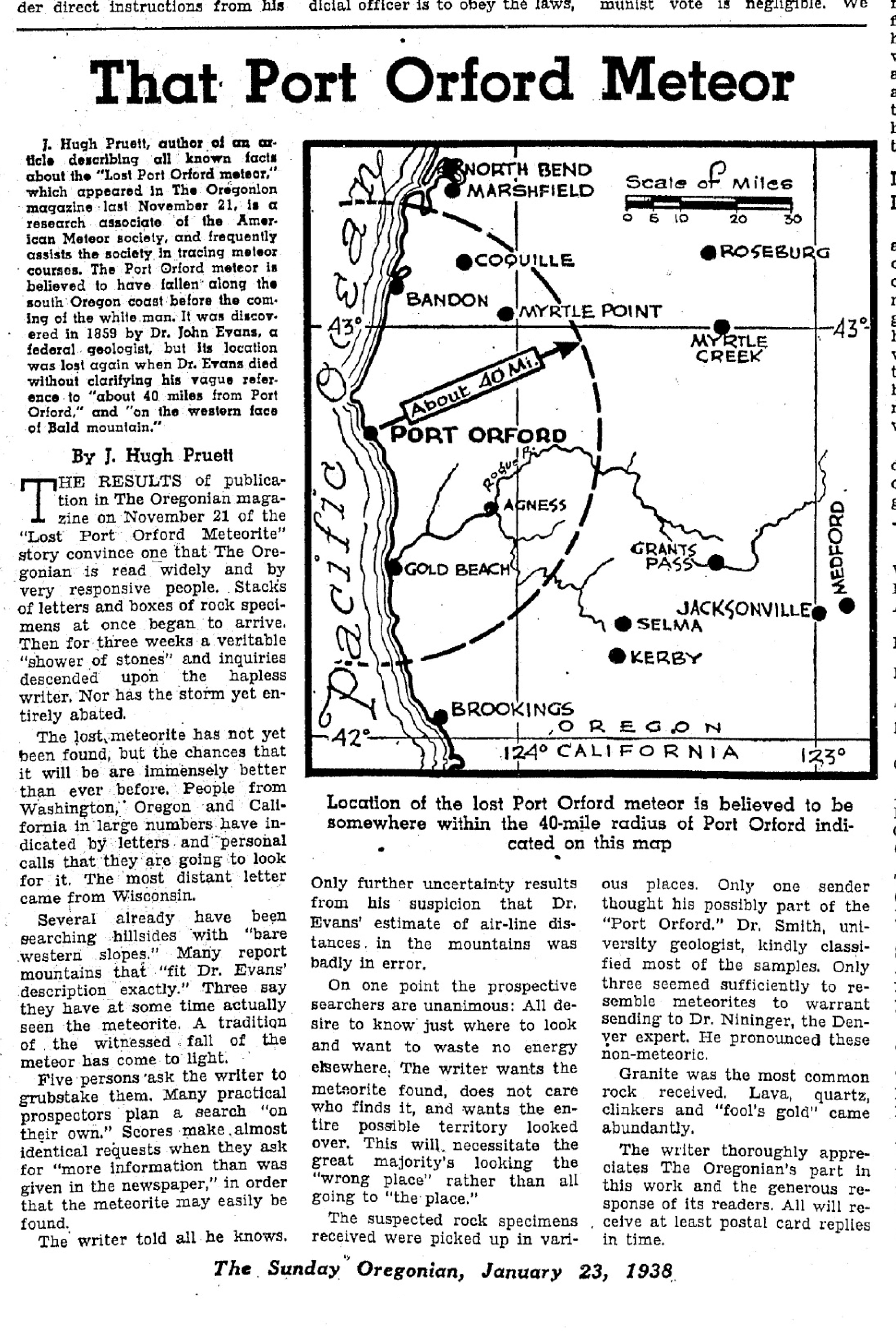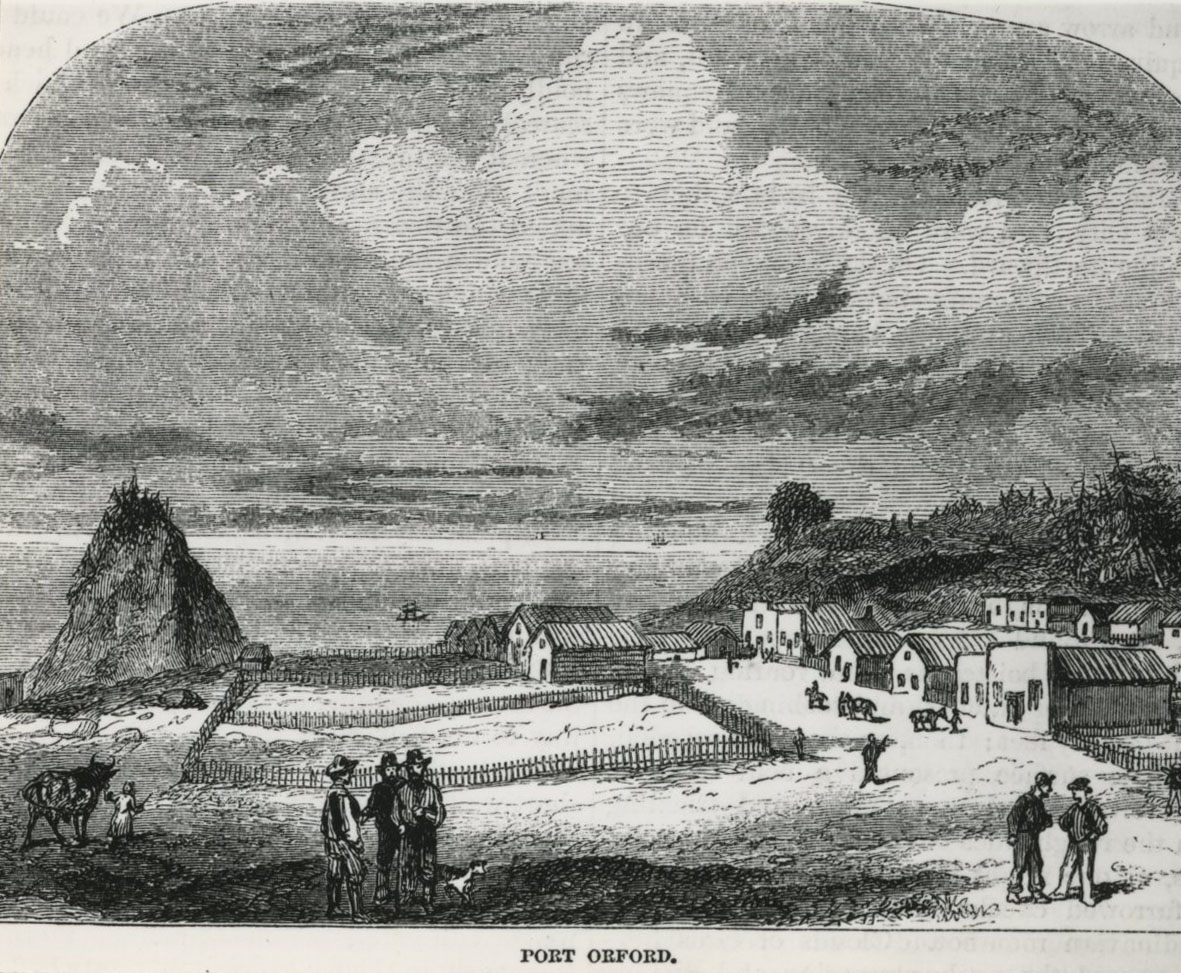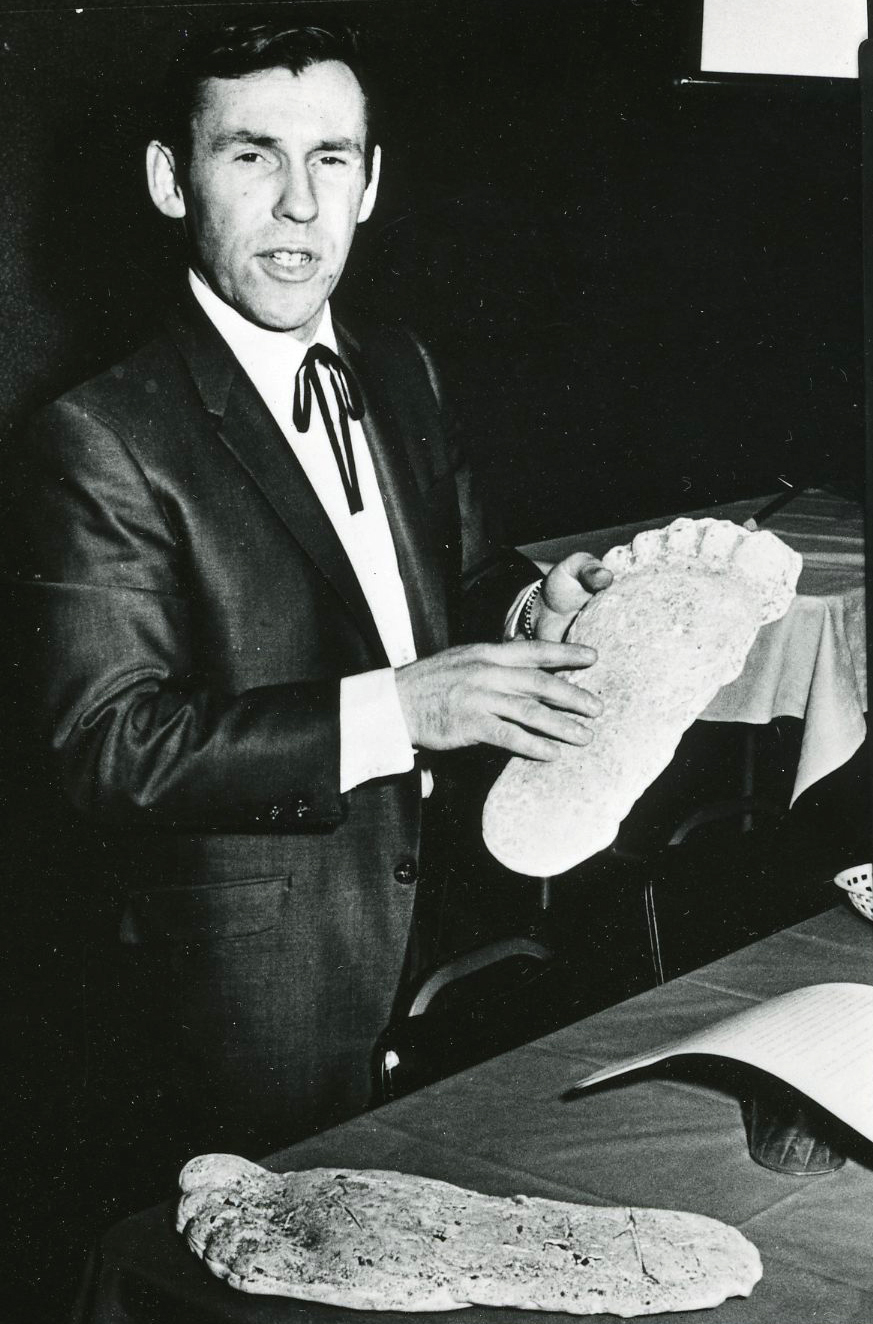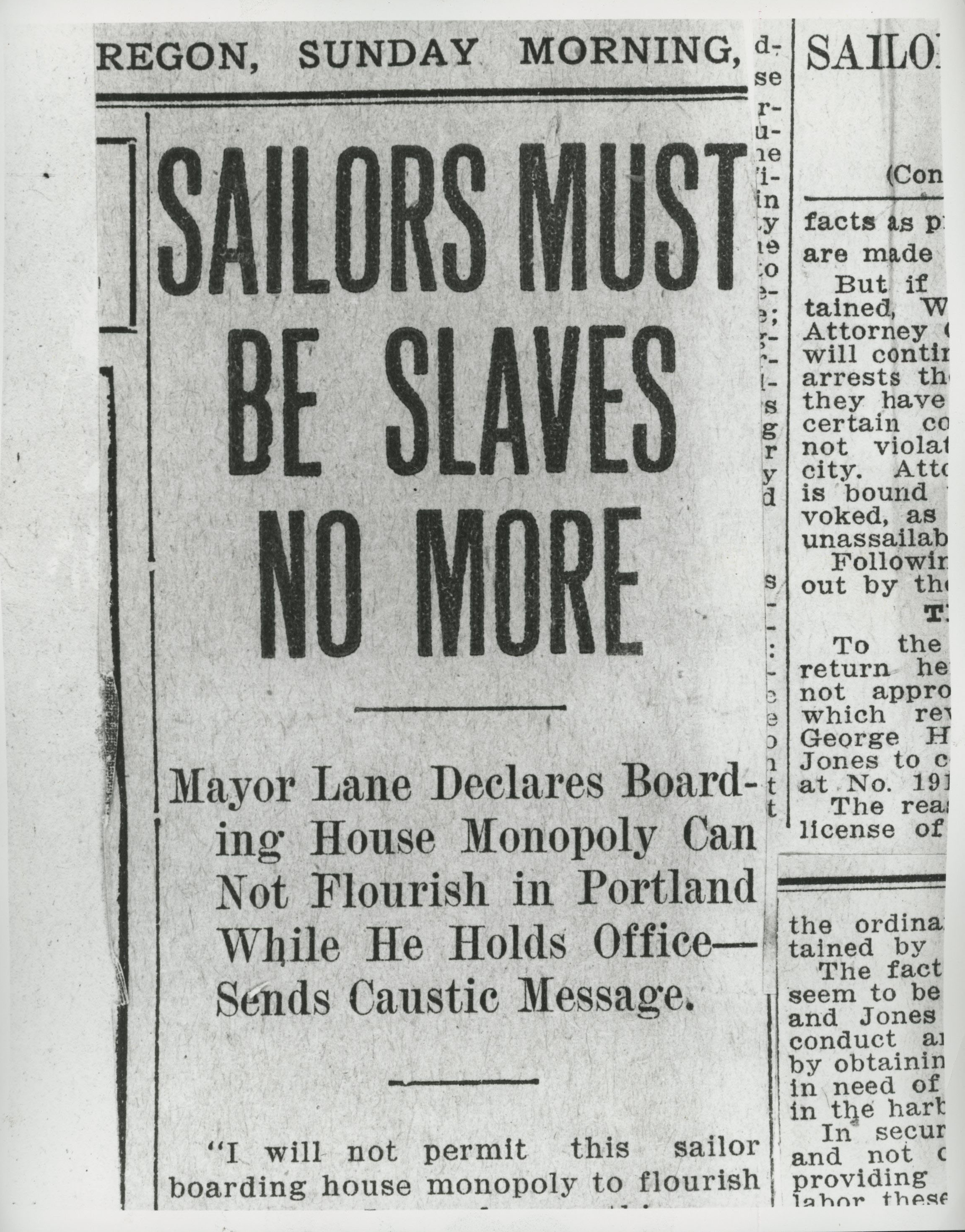The Port Orford Meteorite has captured the imagination of Oregonians for well over a century. Although the meteorite remains an object of speculation, the scientific consensus is that the “find” was a hoax. Nevertheless, the persistence of the meteorite story has become a part of Oregon history.
In 1856, the U.S. Department of the Interior hired John Evans, a New Hampshire medical doctor with some geological experience (including collecting Cenozoic mammalian fossils in Nebraska Territory), to conduct a geological reconnaissance of southwestern Oregon. Starting at Port Orford on July 18 and traveling northeast through reportedly rugged terrain, Evans reached the Willamette River by July 31. He collected specimens along the way, which he donated to the Boston Society of Natural History in 1859. While examining Evans’s collection a few months later, Harvard chemist Charles Jackson found that several of the small specimens were fragments of a pallasite, an extremely rare type of meteorite.
In subsequent correspondence, Evans reported to Jackson that he had hammered off pieces of rock from a partially buried boulder that lay exposed on a grassy slope near the summit of a place he called Bald Mountain, about forty miles from the coast. News of the “10-ton meteorite” provoked widespread publicity, and another expedition was proposed, with Evans at its lead. He died of pneumonia on April 13, 1861, however, before the expedition could begin.
In 1929 and again in 1939, geologists from the Smithsonian Institution searched Evans’s route without finding anything resembling his discovery. Evans’s field journal from his 1856 trip contained no maps and no mention of the boulder or Bald Mountain and no record of the specimens. Nevertheless, some Oregon residents continued to search for the meteorite, spurred on in part by claims in the 1930s of its monetary value.
The Boston Society donated Evans’s samples to the Smithsonian Institution in 1920, where specialists gave them closer examination. Edward Henderson, the curator of meteorites, concluded that although the rocks were of meteoric origin, they did not come from Oregon. In 1964, Henderson, who had searched for Evans’s Bald Mountain in 1939, concluded that his analysis “could well lead one to consider the possibility that . . . the ‘Port Orford meteorite’ is a myth.”
Investigations during the 1990s closed the book on the question. Historian Howard Plotkin conducted an exhaustive examination of the historic record, and the specimens were analyzed by metallurgist Vagn Buchwald and Roy Clarke, Henderson's colleague at the Smithsonian. Clarke concluded that Evans’s samples are actually from the Imilac meteorite field in the Atacama Desert of coastal Chile, first discovered in around 1820.
Evans, who was in serious financial straits by 1856-1857, evidently perpetrated the elaborate hoax, hoping to receive fame as a geologist and secure governmental funding. According to Plotkin, he likely obtained the pieces while crossing the Panamanian Isthmus during an 1858 trip, by which time Imilac samples were sold as curios.
Despite compelling evidence to the contrary, the Port Orford Meteorite still has firm believers and enthusiastic searchers. Although Ruby Hult's 1957 Lost Mines and Treasures of the Pacific Northwest is cited by some as containing “documented proof” of the meteorite’s existence, the author provides no credible evidence that the meteorite exists.
-
![]()
"That Port Orford Meteor," Sunday Oregonian, Jan. 23, 1938.
Courtesy Portland Oregonian
-
![]()
Port Orford, 1855, from Harper's Monthly.
Courtesy Oregon Hist. Soc. Research Lib., Orhi3876
Related Entries
-
![Bigfoot (Sasquatch) legend]()
Bigfoot (Sasquatch) legend
Bigfoot is a large and mysterious humanoid creature purported to inhabi…
-
![Shanghaiing in Portland and the Shanghai Tunnels Myth]()
Shanghaiing in Portland and the Shanghai Tunnels Myth
Since the 1970s, a myth has grown up that propounds the existence of a …
Map This on the Oregon History WayFinder
The Oregon History Wayfinder is an interactive map that identifies significant places, people, and events in Oregon history.
Further Reading
Buchwald, Vagn F. and Roy S. Clarke, Jr. "Mystery Solved: The Port Orford Meteorite is an Imilac Specimen." In The Port Orford, Oregon, Meteorite Mystery, edited by Roy S. Clarke, Jr., 25-43. Washington, D.C.: Smithsonian Institution Press, 1993.
Henderson, E. P. and Hollis M. Dole, "The Port Orford Meteorite." The Ore Bin 26:7 (1964), 113-130.
Plotkin, Howard "The Port Orford Meteorite Hoax." Sky & Telescope (Sept. 1993), 35-37.
Plotkin, Howard. "John Evans and the Port Orford Meteorite Hoax." In The Port Orford, Oregon, Meteorite Mystery, edited by Roy S. Clarke, Jr., 1-24. Washington, DC: Smithsonian Institution Press, 1993.




